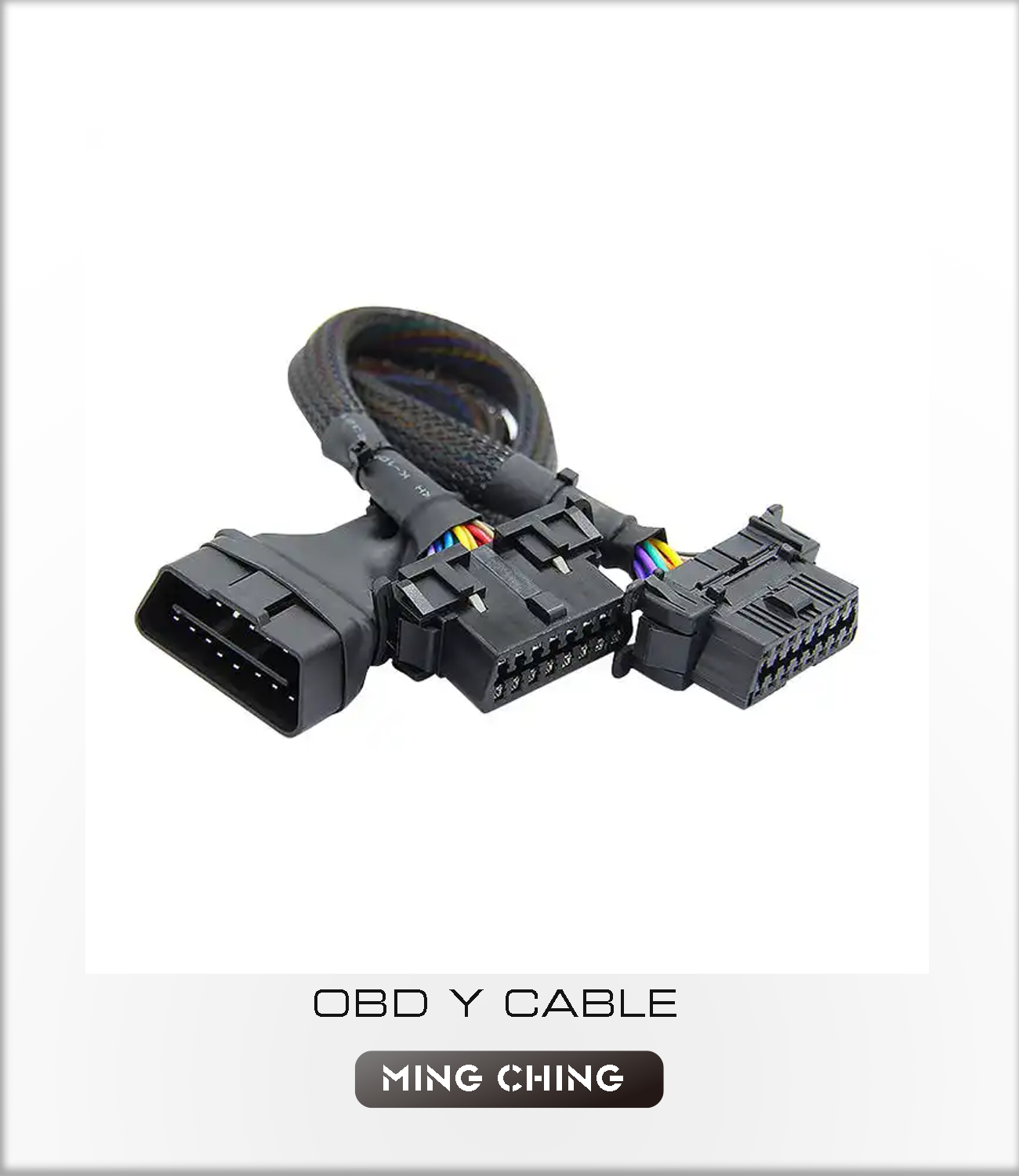The main function of OBD cables is to communicate with the vehicle's ECU by connecting the vehicle's OBD interface to diagnostic equipment (such as scan tools, laptops or smartphones). OBD cables are able to transmit multiple types of data, including fault codes, sensor information, engine operating status, emission data, etc. by connecting to the car's OBD port.
The core function of OBD cables is the transmission of data. Through the OBD port, the cable connects the vehicle's ECU to an external device (usually a diagnostic instrument). This data can include key parameters such as engine temperature, speed, and fuel system status. When a vehicle fails, the OBD system will record error codes, which can be transmitted to the diagnostic equipment via OBD cables to help technicians determine the specific location of the fault.
OBD cables usually use a standard 16-pin connector that complies with the international OBD-II standard. Whether it is a vehicle in Europe, the United States or other regions, the OBD cable and interface are basically consistent, making it very adaptable and applicable to various types of vehicles.

OBD cables can help technicians monitor the operating status of the car in real time through diagnostic tools. When a problem occurs in the vehicle, the OBD cable can quickly transmit the fault code, helping technicians make a quick diagnosis and locate the root cause of the problem. In addition, OBD cables can also be used to optimize vehicle performance, such as adjusting engine parameters and viewing fuel consumption data.
The most common application scenario of OBD cables is in vehicle maintenance and troubleshooting. When a vehicle fails, technicians will connect the diagnostic instrument through the OBD cable to obtain real-time data from fault codes and vehicle sensors. This data helps diagnose vehicle problems, avoids unnecessary disassembly and inspection, and improves repair efficiency.
For transportation companies or fleet managers, OBD cables can be connected to the OBD port of the vehicle to monitor the operating status of the vehicle in real time, including fuel efficiency, mileage, engine health, etc. This data can help managers improve vehicle efficiency, optimize maintenance strategies, and reduce operating costs.
Some car enthusiasts and modified car owners also use OBD cables to adjust and optimize the performance of their cars. By connecting to the vehicle's ECU through an OBD cable, users can adjust the parameters of the engine control unit and optimize the vehicle's acceleration, fuel consumption and other performance.
MingChing is a leading brand focusing on automotive electronic diagnostic tools and cable solutions. We provide a variety of high-quality OBD cables, which are widely used in the fields of automotive maintenance, fleet management and vehicle performance adjustment. Our OBD cables are made of high-quality materials and have the characteristics of durability, anti-interference, and stable data transmission. Whether it is the traditional OBD-II standard interface or customized OBD cables for special models, MingChing can provide products that meet customer needs.
In addition, MingChing's OBD cables support fast and reliable connections, ensuring that car owners and technicians can efficiently obtain vehicle diagnostic information. With precise design and excellent performance, our OBD cables have not only won wide recognition in the global market, but also made important contributions to the development of the automotive electronics industry.
 Hot News
Hot News2024-06-21
2024-06-21
2024-06-21